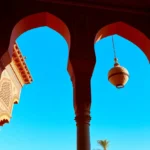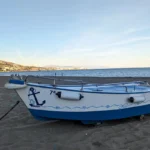While Fuengirola is renowned today for its sun-soaked beaches and modern amenities, a deeper dive into its storied past reveals a fascinating tapestry woven from the fabric of the Middle Ages. From the time of the Moors to the reconquests in the late 15th century, medieval Fuengirola was a hub of bustling activity and cultural exchange, shaping the charming town we know today. 🌊🏰
If you’re a history enthusiast or simply curious about how this vibrant destination evolved, we invite you to explore medieval Fuengirola with us, unearthing the remnants of its past that still linger in the streets, architecture, and even culinary delights of this coastal gem. Let’s embark on this enlightening journey!
Understanding the Historical Context of Fuengirola
The history of Fuengirola can be traced back to its origins as a Roman settlement known as “Suel,” which eventually evolved into a Moorish stronghold. During the Middle Ages, particularly between the 8th and 15th centuries, Fuengirola witnessed significant transformations influenced by various cultures.
In this period, the Iberian Peninsula was marked by the Islamic conquests that began in the early 8th century. The Moors introduced advanced agricultural techniques, new architectural styles, and a profound cultural influence. This was a time when knowledge flourished, science advanced, and art saw remarkable progression.
The Moorish Era in Fuengirola
As the Moors established themselves in Fuengirola, they fortified the area, becoming a strategic point between Málaga and Granada. The evidence of these medieval structures still exists today, most notably in the remnants of the old castle, known locally as “Castillo Sohail.” Constructed in the 10th century, this fort was primarily built to defend against attacks from the sea and was considered a crucial military post during its time.
Visitors can roam the castle grounds today, absorbing panoramic views of the Mediterranean while picturing the bustling life of medieval Fuengirola where merchants, soldiers, and artisans coursed through the same paths.

Key Events that Shaped Medieval Fuengirola
- The Capture of Fuengirola (1485): One of the pivotal moments in Fuengirola’s history occurred during the Reconquista when the Catholic Monarchs, Ferdinand and Isabella, seized the town, ending the Moorish rule. This event not only marked a significant change in authority but initiated the Spanish Renaissance in the region.
- The Plague (14th Century): Like many European towns, Fuengirola was not immune to the widespread devastation of the Black Death. This pandemic had profound societal effects, reshaping demographics and altering labor structures in the surviving community.
- Economic Developments: The Middle Ages brought about a vibrant trading economy, with Fuengirola serving as a critical port. The local community relied on agriculture, fishing, and trade—essential components that buoyed its development.
Life in Medieval Fuengirola
The daily life of medieval Fuengirola residents was markedly different from today. Society was organized around agrarian practices, with many families engaged in farming and fishing. The townspeople cultivated olives, grapes, and cereals, contributing to a thriving but simple lifestyle.
Moreover, trade routes connecting Fuengirola with other parts of the Peninsula allowed for the exchange of goods and ideas. Artisan markets bustled with activity, creating a rich tapestry of culture marked by music, dance, and local festivals that celebrated the community and its heritage.
The Transformation of Fuengirola into a Modern City
Moving past the Middle Ages, the town underwent significant transformation, particularly from the late 20th century onwards. A shift towards tourism brought exponential growth; beautiful beaches attracted visitors from around the world. The transformation of Fuengirola into a modern leisure destination has not erased its historical context. Instead, it has created an intriguing contrast, where historical sites coexist with contemporary amenities.
In modern Fuengirola, you can stumble upon quaint, centuries-old structures nestled among vibrant tapas bars and shopping districts. The old squares maintain their charm, providing a perfect backdrop for outdoor cafés where you can indulge in local Andalusian gastronomy—a blend of flavors influenced by its rich history.

Discovering Medieval Influences in Modern Fuengirola
As you wander through Fuengirola, keep an eye out for signs of its medieval past. The layout of the old town, with its narrow alleys, recalls times when tradespeople peddled their wares. Don’t miss a visit to the Roman ruins of “Suel,” which lie on the outskirts, connecting modern-day Fuengirola with its ancient origins.
Additionally, the local museums often feature exhibitions dedicated to the medieval era, showcasing artifacts from the Moorish occupation and subsequent Christian reconquest. This intertwining of history and modernity gives visitors a unique lens through which to appreciate Fuengirola’s evolution.
Your Historic Adventure Awaits
Whether you’re an avid history buff or a curious traveler, Fuengirola will offer a rich narrative of its medieval past waiting to be discovered. From exploring the historic Castillo Sohail to enjoying traditional culinary experiences amidst the vibrant local culture, every corner tells a story. So pack your bags, lace up your walking shoes, and embark on a historic journey through time in the beautiful coastal town of Fuengirola!
Feel free to share your own experiences regarding medieval Fuengirola—it’s always wonderful to hear from those who have enjoyed the rich history embedded in this charming town!
Safe travels and happy exploring!

